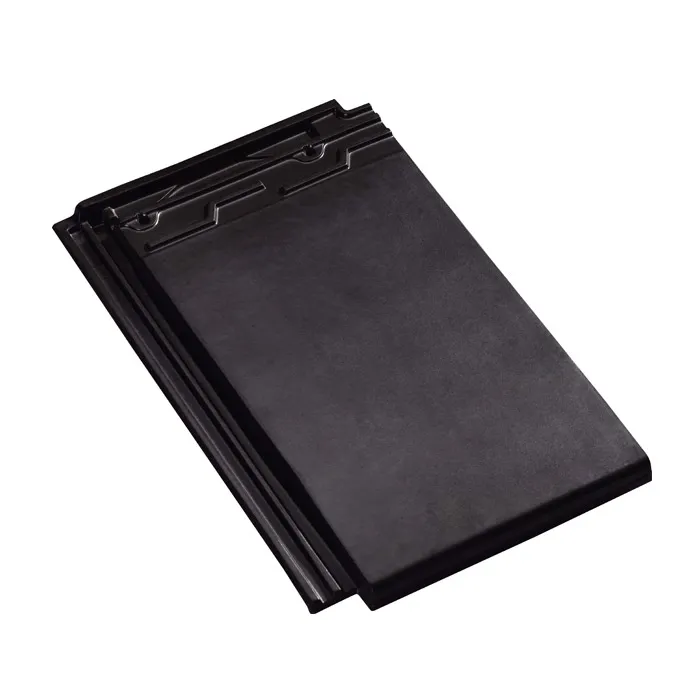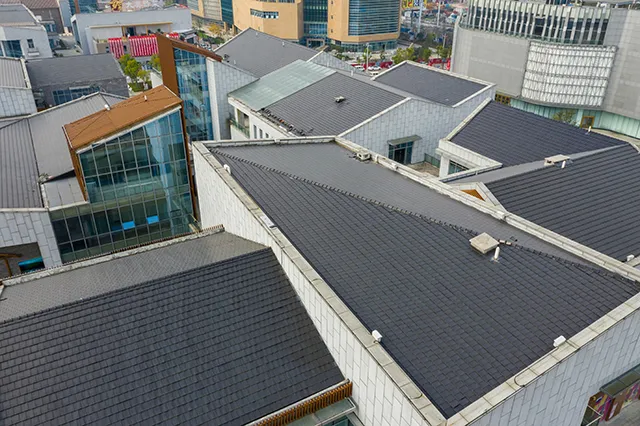Clay roof tiles are a common roof covering material in construction. They are widely used in residential and commercial buildings because of their beautiful, durable and good insulation properties. However, any building material is inevitably affected by external factors, and clay tiles are no exception. Clay tiles may fall off under long-term wind and rain erosion, climate change or improper construction. So, what are the consequences of clay roof tiles falling off? How often should we check to ensure the stability and safety of the roof? This article will explore these issues in depth and provide readers with professional advice.

What happens if clay roof tiles fall off?
Clay tile falling off may seem like a small problem, but in fact, falling tiles may bring a series of serious consequences, affecting the function of the roof and threatening personal safety.
1. Decreased waterproof performance
One of the main functions of clay tiles is to protect the roof from rain erosion and ensure the dryness and safety of the house. The arrangement and overlapping design of the tiles make it extremely waterproof. Once some tiles fall off, the waterproof layer below or the structural part of the roof will be exposed, which directly weakens the waterproof function of the roof.
● Rainwater penetration: When the tiles fall off, rainwater can easily penetrate into the roof through the exposed parts. This will cause the roof to leak, which may cause serious problems such as dampness, mold, and even collapse of the walls and ceilings in the room.
● Water accumulation problem: In some cases, the falling tiles will also cause the drainage system of the roof to fail, and the rainwater cannot flow away smoothly, forming water accumulation. Water accumulation will increase the pressure on the roof and may cause more extensive damage.
2. Roof structure damage
The falling of clay tiles not only affects the surface of the roof, but its long-term impact may extend to the entire roof structure. After the tiles fall off, the exposed roof base will directly face the erosion of the external environment. Over time, this direct exposure may cause the following problems:
● Wood structure rot: If the base of the roof is made of wood, rainwater penetration will cause the wood to rot. This will cause a significant decrease in the bearing capacity of the roof structure, which may eventually endanger the stability of the entire roof.
● Rusting of metal structures: If it is a steel structure roof, the exposed metal parts after the tiles fall off are easily affected by rain and moisture, and rust will occur. This not only affects the appearance of the roof, but also weakens the strength of the metal, causing structural failure.
3. Reduced thermal insulation of the roof
Clay tiles not only play a waterproof role, but also have good thermal insulation effects. Especially in summer, clay tiles can effectively block direct sunlight and keep the room cool. Once the tiles fall off, the roof loses this layer of protection, and the thermal insulation performance is weakened. It will become difficult to control the temperature indoors, which may lead to an increase in the cost of using air conditioners or other refrigeration equipment.
4. Increased safety hazards
The fallen clay tiles will not only affect the function of the roof, but also pose a threat to the safety of residents or pedestrians. Clay tiles are heavy. Once they fall from a height, they may injure pedestrians and vehicles passing by, and even damage nearby housing facilities. In addition, the fallen tiles may trigger a chain reaction of more tiles, reducing the overall safety of the roof.
5. Affected house value
The falling of clay tiles will also have a negative impact on the overall value of the house. The roof is an important part of the structure of the house. Any tiles that fall off or are damaged will affect the appearance of the house. If they are not repaired for a long time, potential buyers may think that the house lacks maintenance, causing its market value to decrease.

How often should clay roof tiles be inspected?
In order to avoid the many problems caused by clay tiles falling off, it is very necessary to inspect the roof regularly. The inspection frequency should be adjusted according to the following factors:
1. Age of the roof
The age of the roof directly determines how often it needs to be inspected. Generally, newly installed clay tiles are relatively stable in the first few years, and rarely fall off or shift. However, over time, the tiles will gradually be affected by natural factors and age faster.
● 1-10 years: It is recommended that a new roof be fully inspected every two to three years during the service life of 1 to 10 years. During this period, the quality and structure of clay tiles are usually stable and only routine maintenance is required.
● 10-20 years: After the roof enters the 10th year, the tiles may show slight aging, especially in areas with harsh climates. At this time, it is recommended to conduct an inspection once a year to detect any potential problems in time.
● More than 20 years: If the roof is more than 20 years old, the aging and loosening of the tiles will be more obvious. It is recommended to inspect it every six months to ensure the stability of the tiles and roof structure.
2. Climate conditions
Clay tiles will be affected to varying degrees under different climate conditions. If your area has a mild climate all year round, the loss of the roof will be relatively small; but if the roof is often affected by extreme weather, the frequency of inspections needs to be increased accordingly.
● Stormy areas: If you live in an area with frequent storms, it is recommended to inspect the roof after every strong wind and heavy rain. Strong winds may cause the tiles to loosen or flip directly, while heavy rain may cause damage to the structure under the tiles.
● Extremely cold or hot areas: In extremely cold or hot areas, clay tiles are easily affected by the expansion and contraction of temperature. It is recommended to inspect them once a quarter to ensure that the tiles have not cracked or loosened due to temperature changes.
3. Roof slope
The slope of the roof also affects the stability of the tiles. For roofs with a larger slope, tiles are more likely to shift due to rain and wind. Therefore, roofs with a larger slope need to be inspected more frequently.
● Steep roof: If your roof has a larger slope, it is recommended to inspect it twice a year to ensure that the tiles have not slipped or fallen off due to gravity or natural factors.
● Gentle roof: Relatively speaking, roofs with a gentler slope can be inspected once a year, but potential problems with tiles cannot be ignored.
4. Inspection method
Regular inspection of clay tiles is not a complicated task. The main purpose is to ensure the stability of the tiles and the functionality of the roof through observation and simple tests.
● Visual inspection: Observe the surface of the tiles with the naked eye to see if there are cracks, displacement, or falling off. If cracks are found on the surface of the tiles or the tiles are tilted, repair measures need to be taken immediately.
● Touch test: Gently push the tiles with your hand to check whether they are stable. If the tiles move easily when touched, it means that the nails or hooks that fix the tiles may be loose and need to be re-reinforced.
● Watertightness test: After the rain, check the roof for leaks or water stains. If you find signs of water seepage on the indoor ceiling, it means that the roof tiles are no longer effectively waterproof and there may be tiles falling off or broken.
5. Professional inspection
Although self-inspection can help find some obvious problems, in order to ensure the long-term stability of the roof, it is recommended to ask professionals to conduct comprehensive inspections regularly. Professional roof inspectors can not only find problems that are difficult to detect during ordinary inspections, but also provide scientific and reasonable repair suggestions.

How to prevent clay tiles from falling off?
In addition to regular inspections, the best way to prevent clay tiles from falling off is to take some necessary protective measures. Installation is a key step in determining the firmness of tiles. During the construction process, it is necessary to ensure that each tile is firmly fixed. The overlapping parts of the tiles, the number and position of the nails must meet the construction standards to prevent the tiles from loosening or falling off during use.
Secondly, strengthen the edge tiles. The edge tiles are the most vulnerable part of the entire roof structure to wind, so during the installation and inspection process, special attention should be paid to the fixing of the edge tiles. Additional fasteners or glue can be used to increase the sturdiness of the tiles. Foshan Rongguan Glass Material for Building Co., Ltd. (Rongguan) is more than a manufacturer; we are innovators in the building materials industry. Our diverse product portfolio includes premium quartz countertops, terrazzo flooring, artificial marble, and classic roof clay tiles. Based in Foshan, our expansive factory combines cutting-edge technology with meticulous craftsmanship to deliver products of exceptional quality. We understand the importance of affordability and offer wholesale pricing, discounts, and promotional deals to support contractors and wholesalers worldwide. With a strong focus on sustainability and design flexibility, Rongguan is proud to supply materials that inspire architects and builders. Get in touch with us for tailored quotes and experience the difference our expertise makes.

